There are few guys who don’t aspire to one day own a walk-in wardrobe filled with all the different types of suits, but we’re often in the dark as to how to get there. Suits are an essential evil for the rest of us. They’re insurance policies that we need to buy at the lowest possible price.
Let us illuminate your position. When it comes to choosing the suits every man should own, you need to consider several factors: suit fit, lapels, buttons, vents, men’s suspenders, pants, and pockets. If it sounds like we just read off a grocery list full of things you’ve never heard of, fear not. This is the ultimate guide for all types of suits available to men.
If you can only afford one type of suit (the tailoring equivalent to the little black gown), choose a slim fit navy suit with 2 buttons and a notch-lapel. You won’t get more use out of anything else. Weddings, job interviews, err, court appearances, it’s got you covered. Especially if you choose a mid-weight fabric – around 11-12oz – so that you can wear it all year round.
The slim fit suit is suitable for any body type. There’s just enough definition to make you look great, without being a skinny fit that highlights all your bumps and lumps (and not just your pecs). If you walk away from this article with just one takeaway, it’s that you need to add a slim fit suit to your wardrobe ASAP. This guide will help you shop online with confidence.
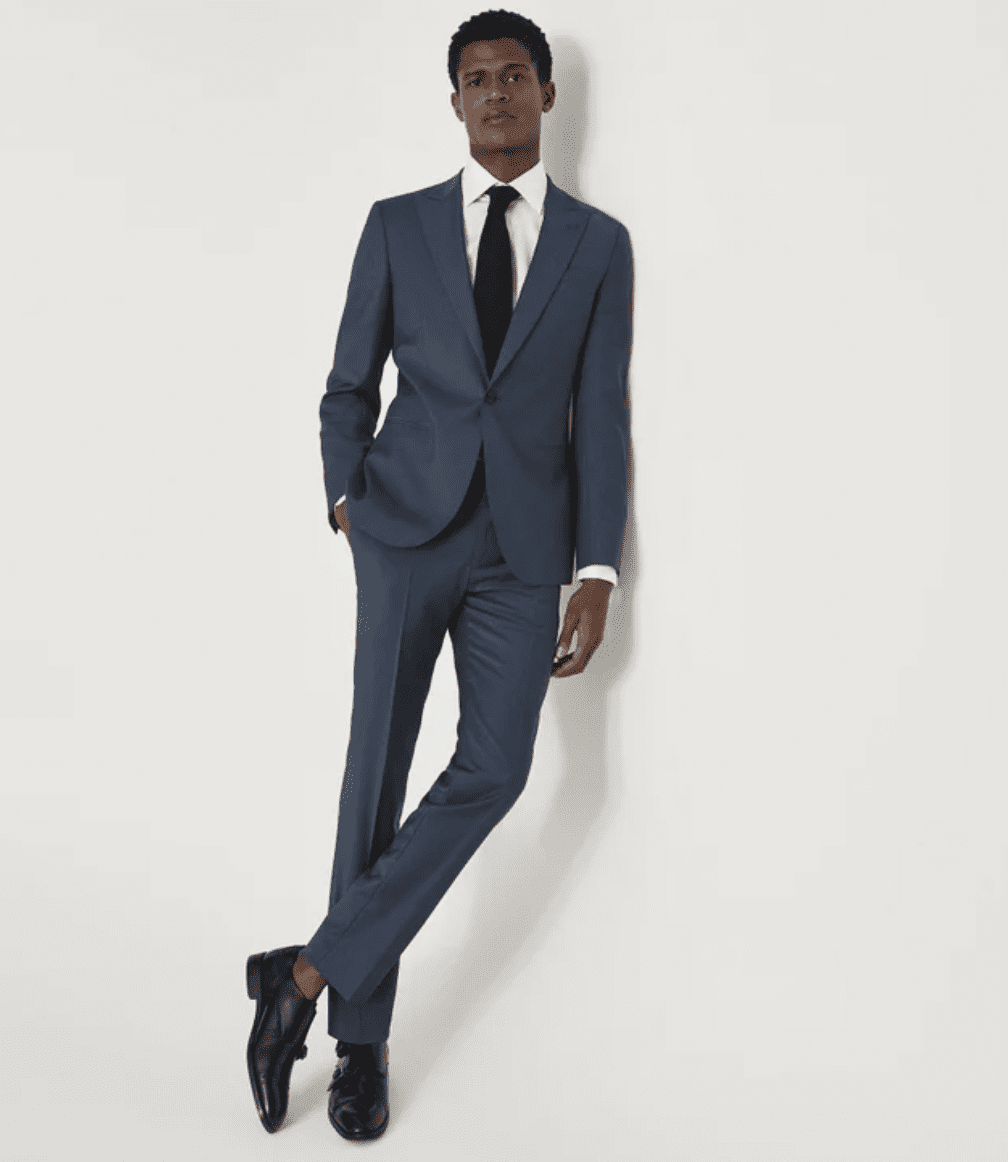
It’s all in the name. A classic fit suit is just that – a type of suit for men that is classic, timeless, which never out of style but is not terribly trendy, either (old money style). Black is formal and dark grey is casual. Navy blue can be worn all year long, every day.
Ideally, you want to choose a shade – and fabric – with mileage. Avoid buying a suit until you have the basics in place. Patterns It’s like a horde of moths that are ravaging cashmere. You won’t be noticed if you wore your navy or gray suit two or three times a week. You will not be missed if you repeat a Prince-of-Wales check.

The modern fit suit. It’s in between slim and classic in terms of fit, the sartorial equivalent of Oreo creme. It’s a great type of suit to buy as a starter if you’re not ready for the full-on slim fit, but still want to look sharp and refined.
Don’t be swayed by high ‘Super’ numbers – a measure of the material’s fineness. ‘Super’ sounds good, but they’ll also wrinkle more, making them unsuitable for daily use. ‘Fine’ also means ‘delicate’. So if this is your first – or only – suit, then you’re likely to blow through it after a couple of months of continuous wear. If you want to get a suit that is both affordable and durable, then stick with a price of 100 or less.
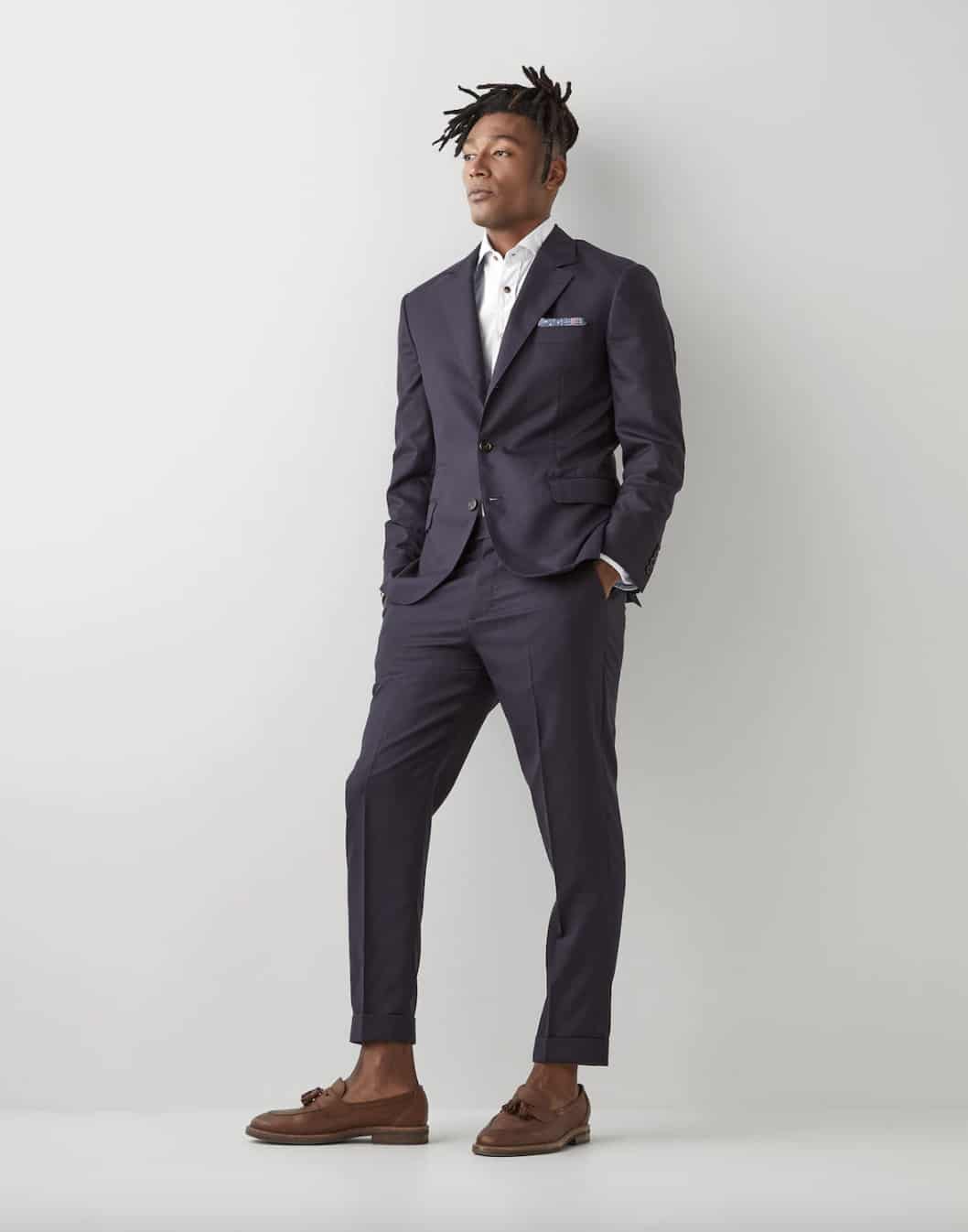
When shopping for must have suits, it’s wise to pay attention to construction. Unstructured, slightly relaxed-cut blazers are less likely to cause sweating, and they speak to the Riviera-style of summer. They also look great next to tanned, earthy tones.
The trick to staying cool when the weather’s not isn’t just in choosing the right type of suit, but the right textiles. Twill, artificial fibers, and other tightly woven fabrics may be less likely to wrinkle, but they also restrict the air flow through the garment. Ultra-lightweight linen, seersucker, or hopsack are better choices.
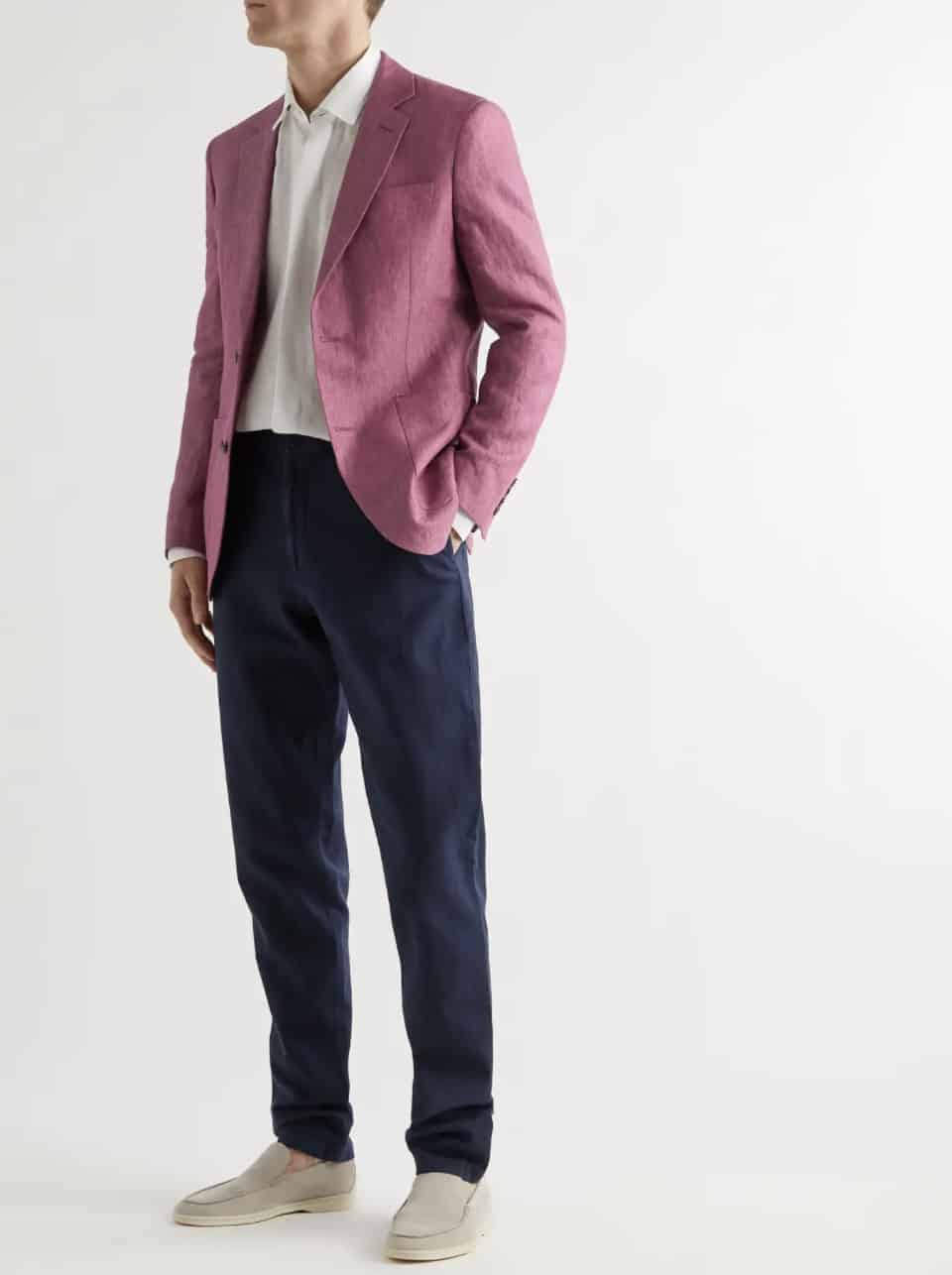
Where collar meets lapel, there is a visible indentation or notch, hence the name ‘notch lapel’ for this suit style. This suit design for men leans on the formal side, but it’s a pretty safe bet for any occasion. This lapel style is most commonly found on single-breasted jackets.
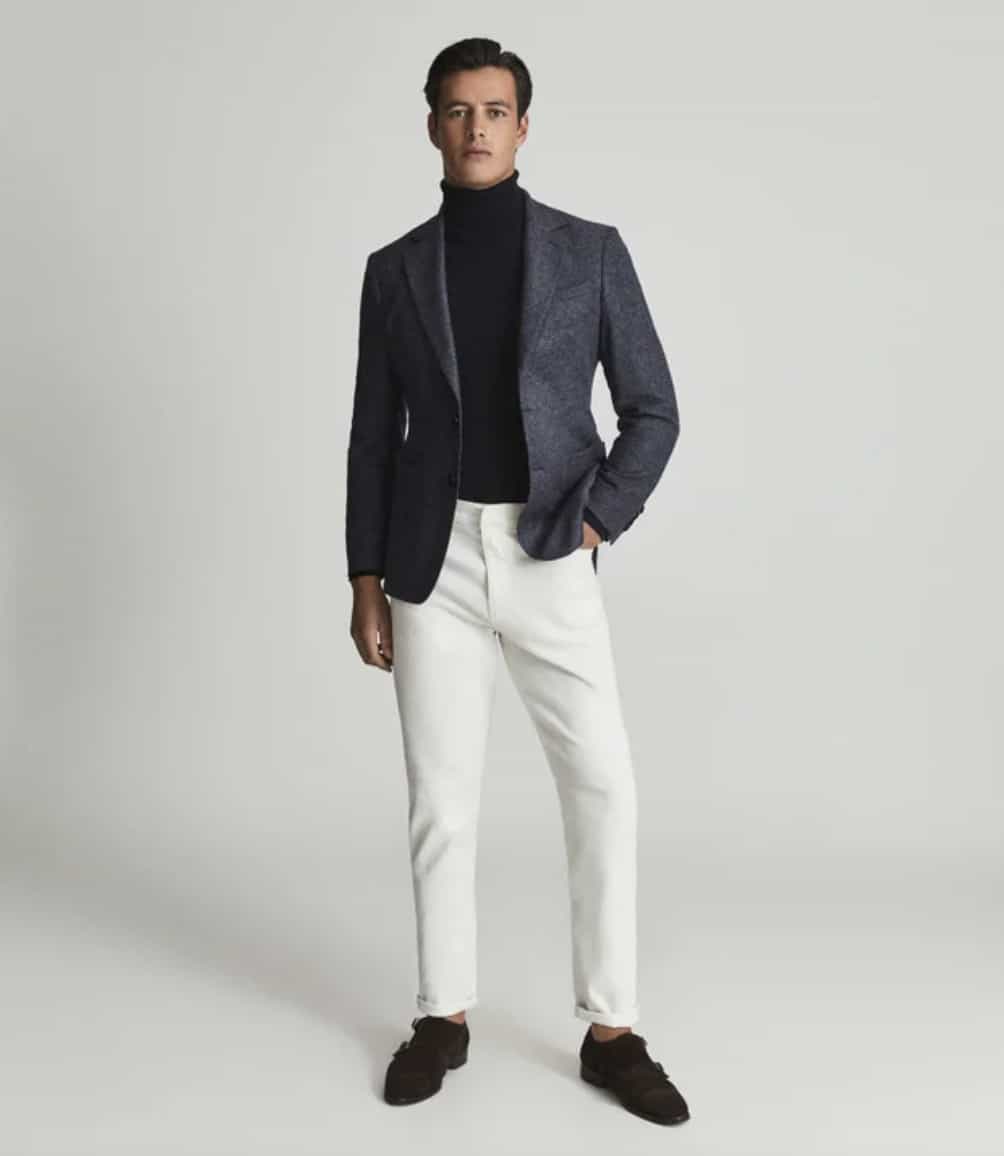
Black tie invitations may be few and far between — as infrequent as one a year, even — but they will come, with increasing regularity as you get older. When they do arrive, it’s usually for an occasion where you want to feel and look your best: a fancy work party, wedding or a long overdue Oscar nomination.
If you’re in one of these few but exciting situations, a shawl collar suit is a great choice. They’re exclusively found on the most formal of formal wear.
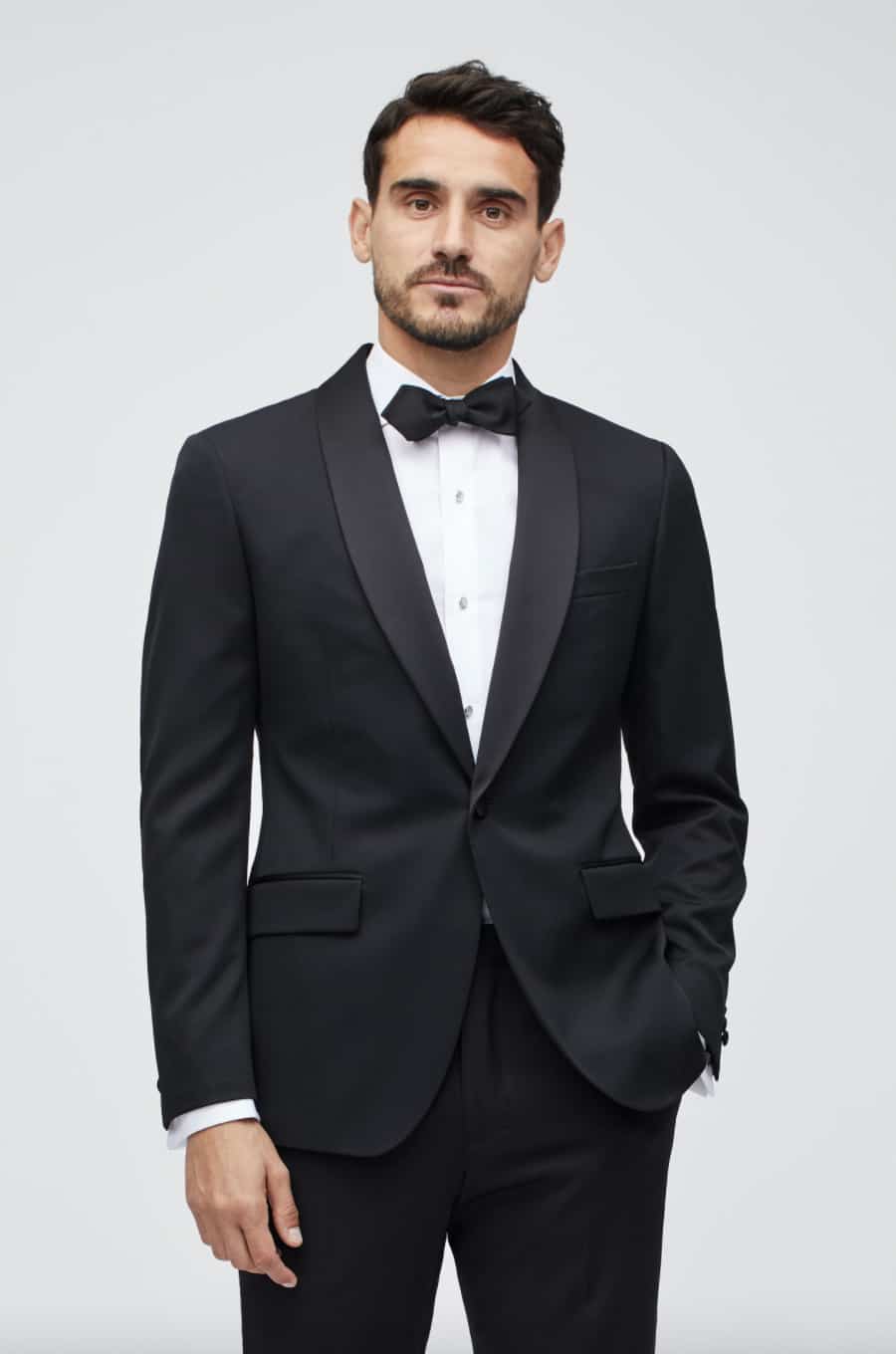
Peak lapels are only slightly less fancy than shawl lapels, but still not much. You’ll notice these smart-looking types of suit at elegant events like black-tie weddings.
Plus, you could don ‘black tie creative’ dinner suits for parties even when the invitation doesn’t call for it. If the jacket has a slim fit and is a little short, it can be worn with jeans and a shirt on a night of fun.

The single-breasted jacket is one of the most essential suits that every man should own. More sleek and modern than its counterpart, the single-breasted suit is characterized by only one row of buttons at the front, rather than two, or even three, if we want to harken back to the mid-1930’s. For now, we prefer not to make our own butter.
Single-breasted suits come with one, two, or three buttons down the front seam in one clean line, and are typically, but not always, accompanied by a notch lapel.
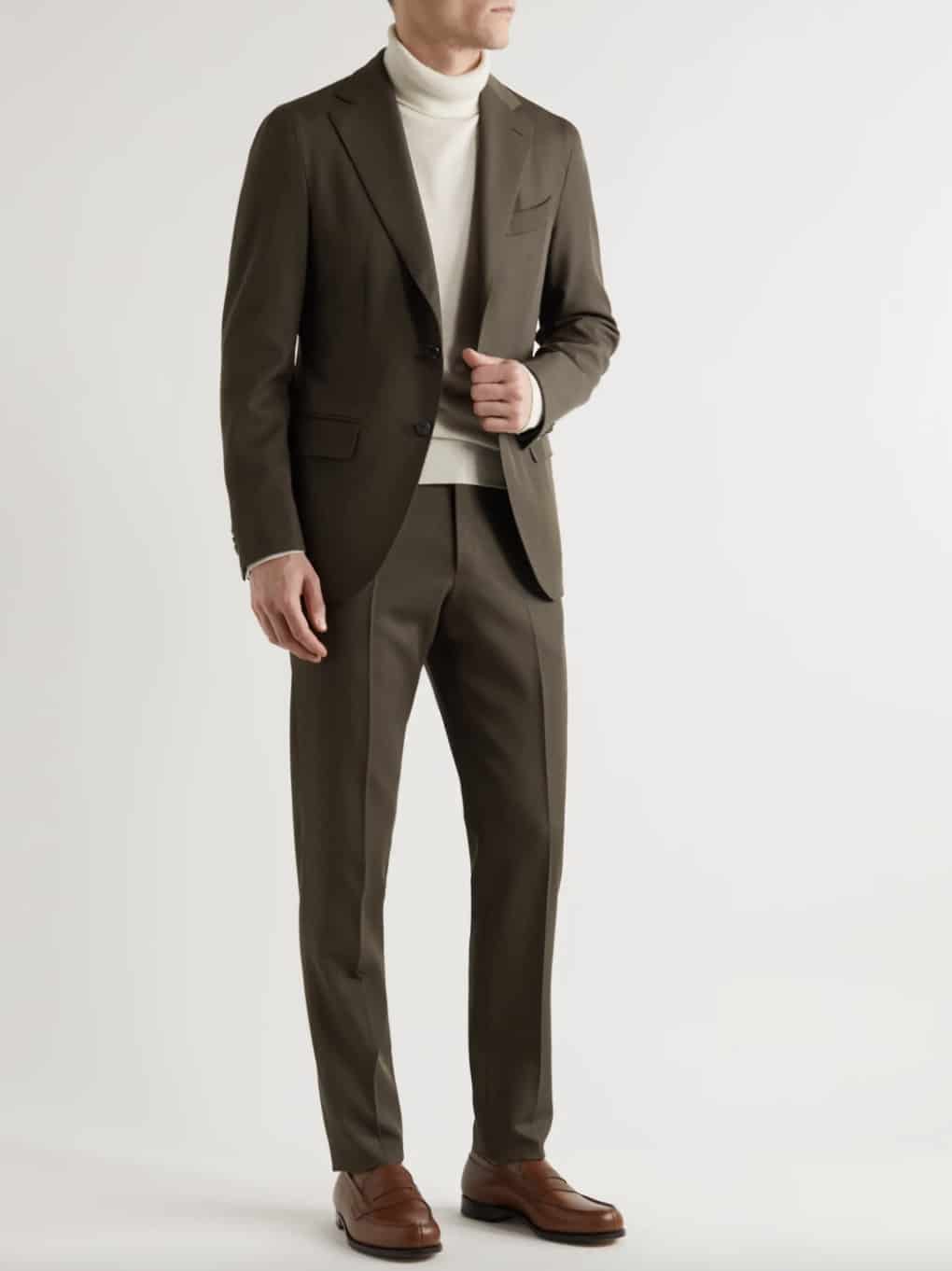
Style guides may recommend a lightweight cotton suit for summer. Instead, now is the time to make a case for a muted, double-breasted type of suit as your dark horse: specifically, an almost-black grey, or navy that’s close to midnight blue, maybe even in a fabric with a bit of a sheen, like a mohair, and with peak lapels.
Why? The dark double-breasted suits are versatile enough to be worn every day. But with the shape, sheen and sharp lapels, it’s also got a bit of swagger about it for those times you need to wear a suit but don’t want to look like you came straight from the office – e.g. Cocktail attire for weddings and invitations. You should make sure to keep the jacket trim and not too large.
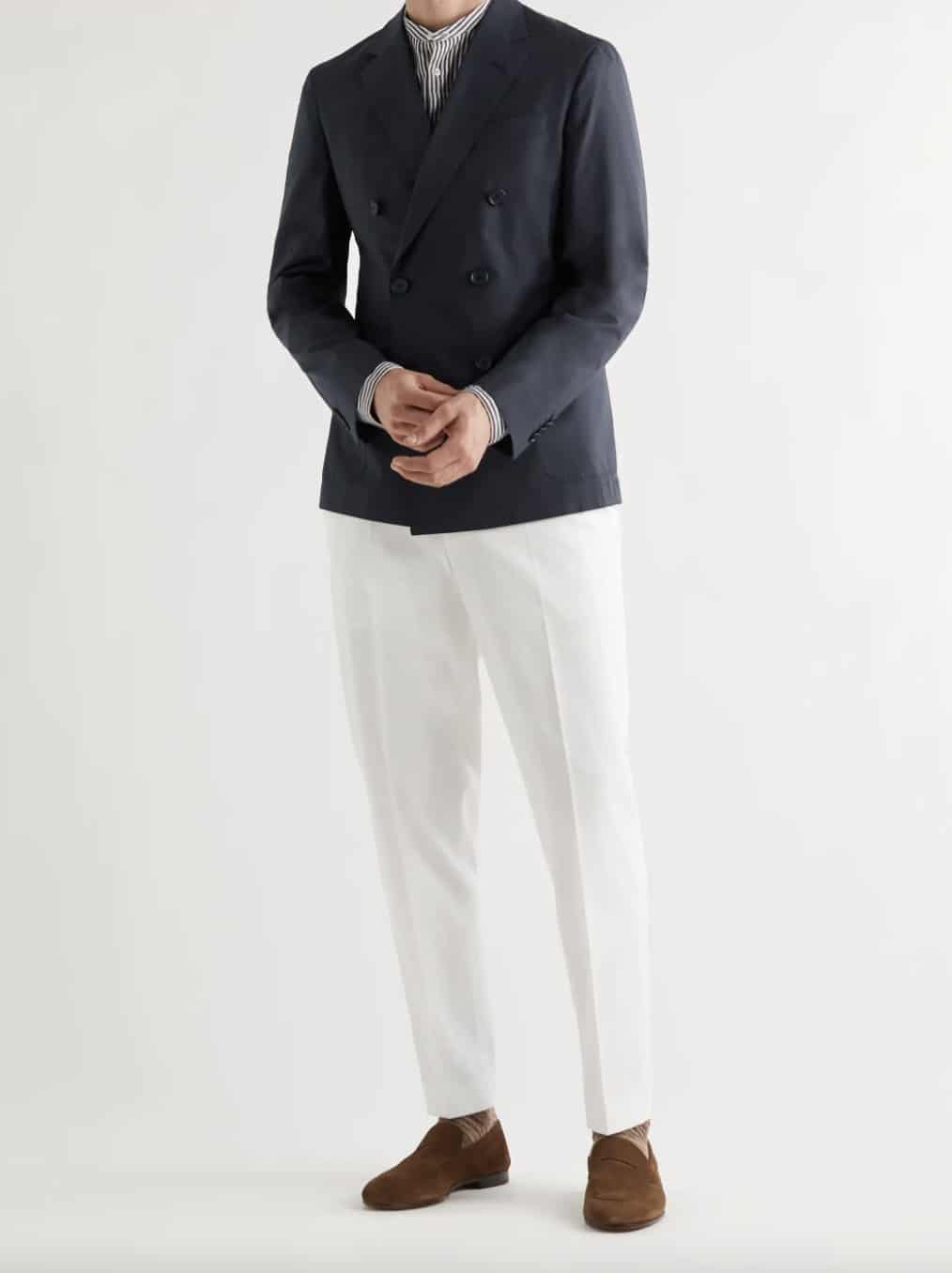
The suit’s vent is the small slit at the back of the suit jacket. Functionally, a suit’s vent is there to make your suit feel less restrictive when you’re sitting or moving around. If you’re trying on a new suit and notice the vent is pulling open when you’re standing still, that means the suit is likely too tight, a common suit fit mistake among new suitors. The center vent of your suit jacket is located in the middle of the back.
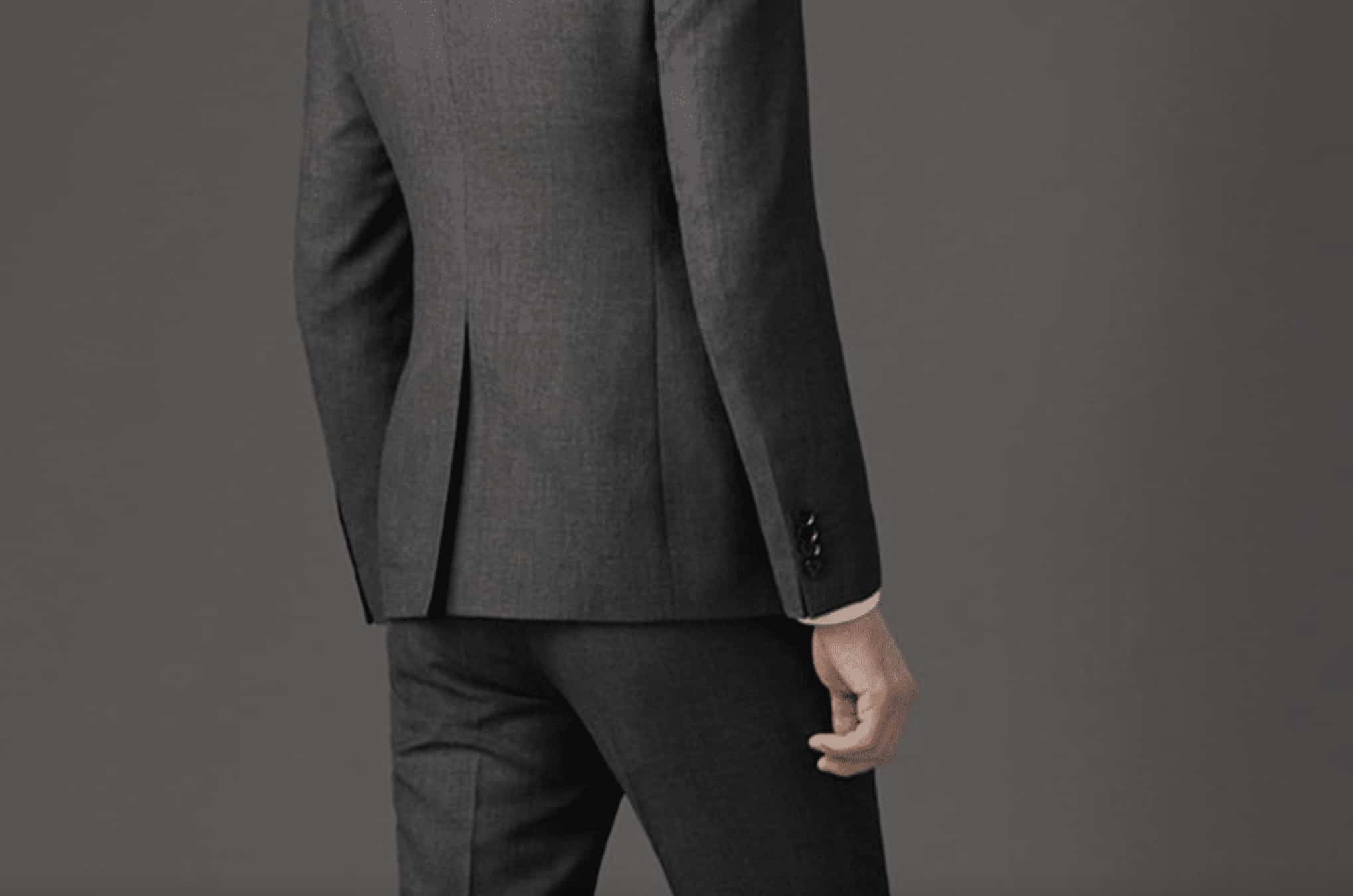
Where the single-vented suit’s slit falls in the center of the jacket’s back, the double-vented suit’s slits are found on either side of the back of the suit jacket. Today, suits with vents at the sides of the jacket are more popular.
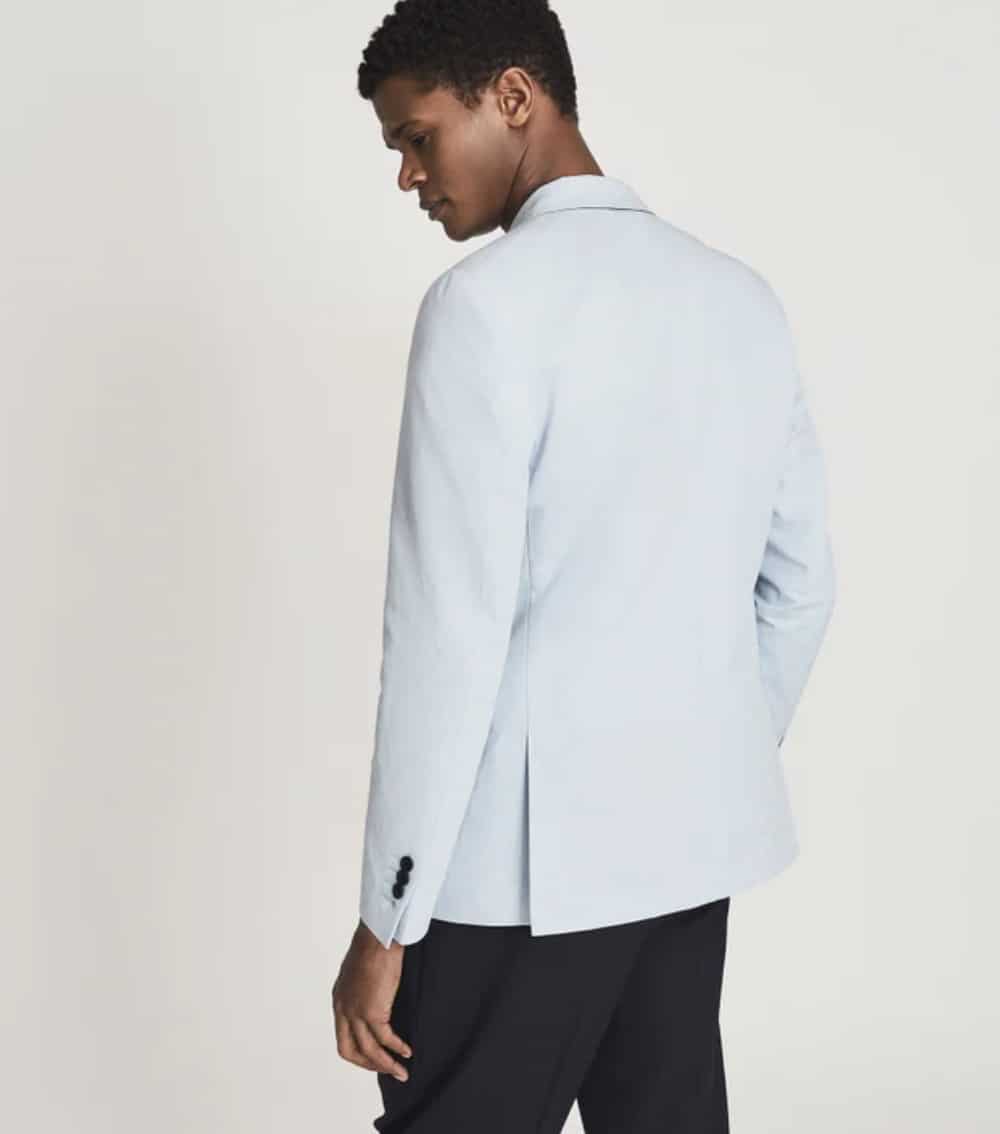
No-vent suits are popular in Italy, and thus, one can assume they’re extremely classy. Some tuxedos are available without vents. However, these jackets tend to be more constrictive, and therefore not suitable for everyday wear. If you’re allergic to ironing, steer clear of this men’s suit style.
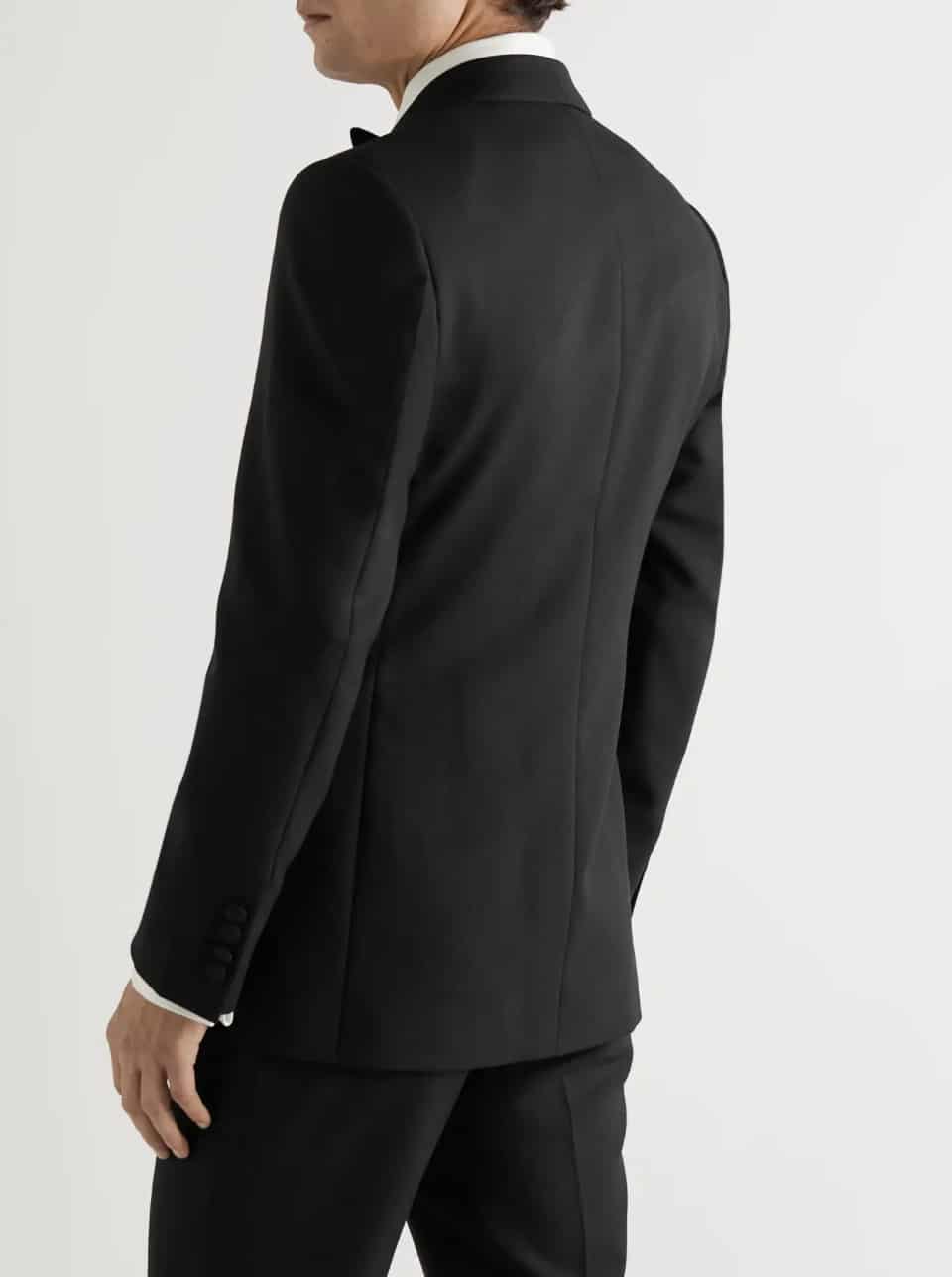
The most popular among modern suit pants, flat front pants don’t feature any pleating or stitching at the front of the pants. These pants have a more exposed look and are less forgiving. Note that pleating and creasing are two different things. It is important to keep your suit pants well-pressed.
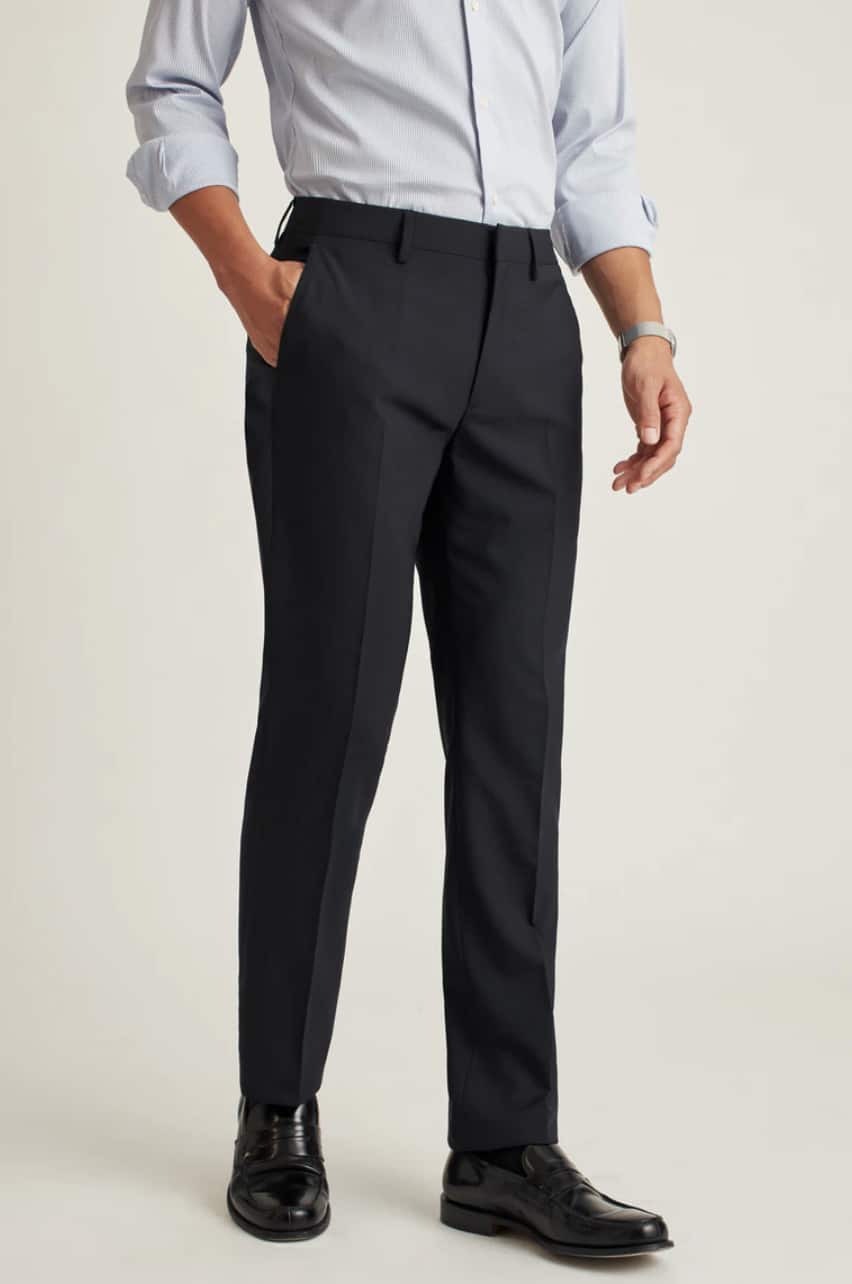
Pleated suit pants give off a vintage feeling, which is a trend celebrities like Harry Styles have been exuding with so much confidence lately, we’re inclined to try it, too. Characterized by the pleated folds at the waistband, they’re more comfortable to wear and more forgiving for all body shapes if you’re carrying a bit of a gut.

Details like patch pockets and contrast buttons enable you to wear a jacket and trousers as suit separates, although they’ll also make the suit slightly more smart-casual. It is helpful to use a fabric with a pattern or texture, such as a hopsack.
Patch pockets do have a way of dressing down a suited outfit, so they’re better for more casual weddings, a day at the derby, or a laid-back weekend event. They’re easy to wear without a tie, too.
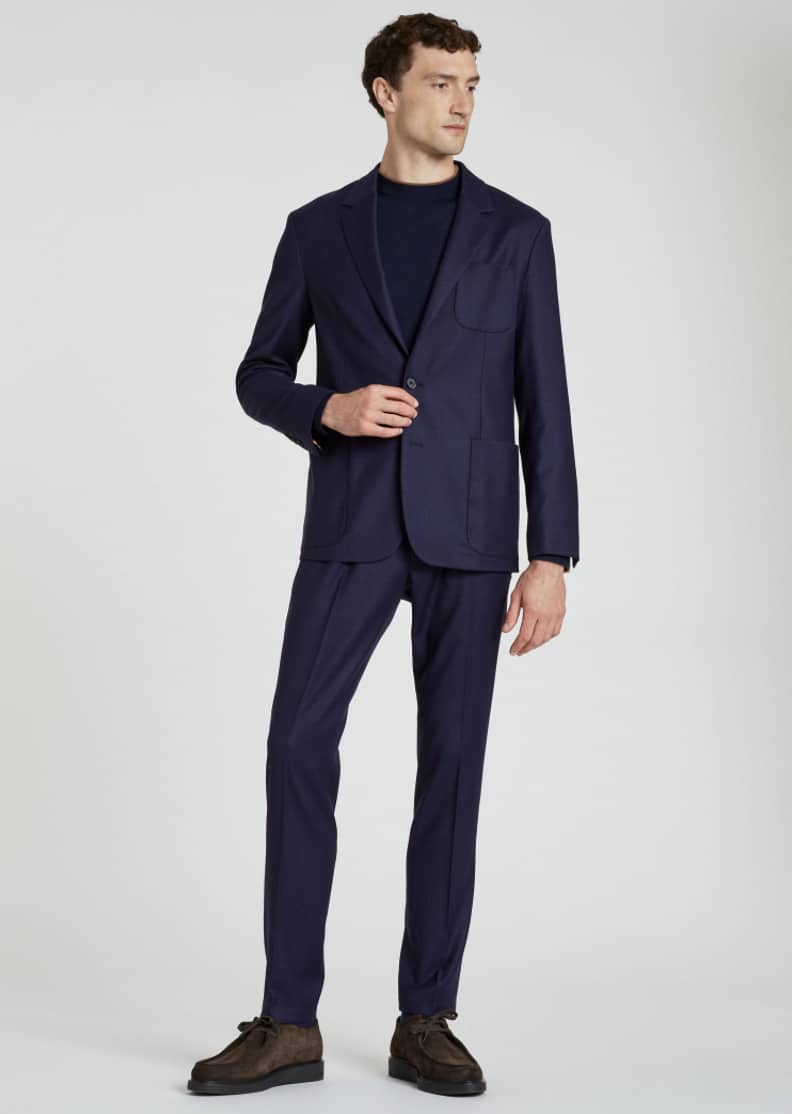
The flap pocket can be dressed down and up. The most common style of suit jacket, it can be worn for both date nights and boardroom meetings. Just don’t take it under the boardwalk, or it’ll get wrinkled.
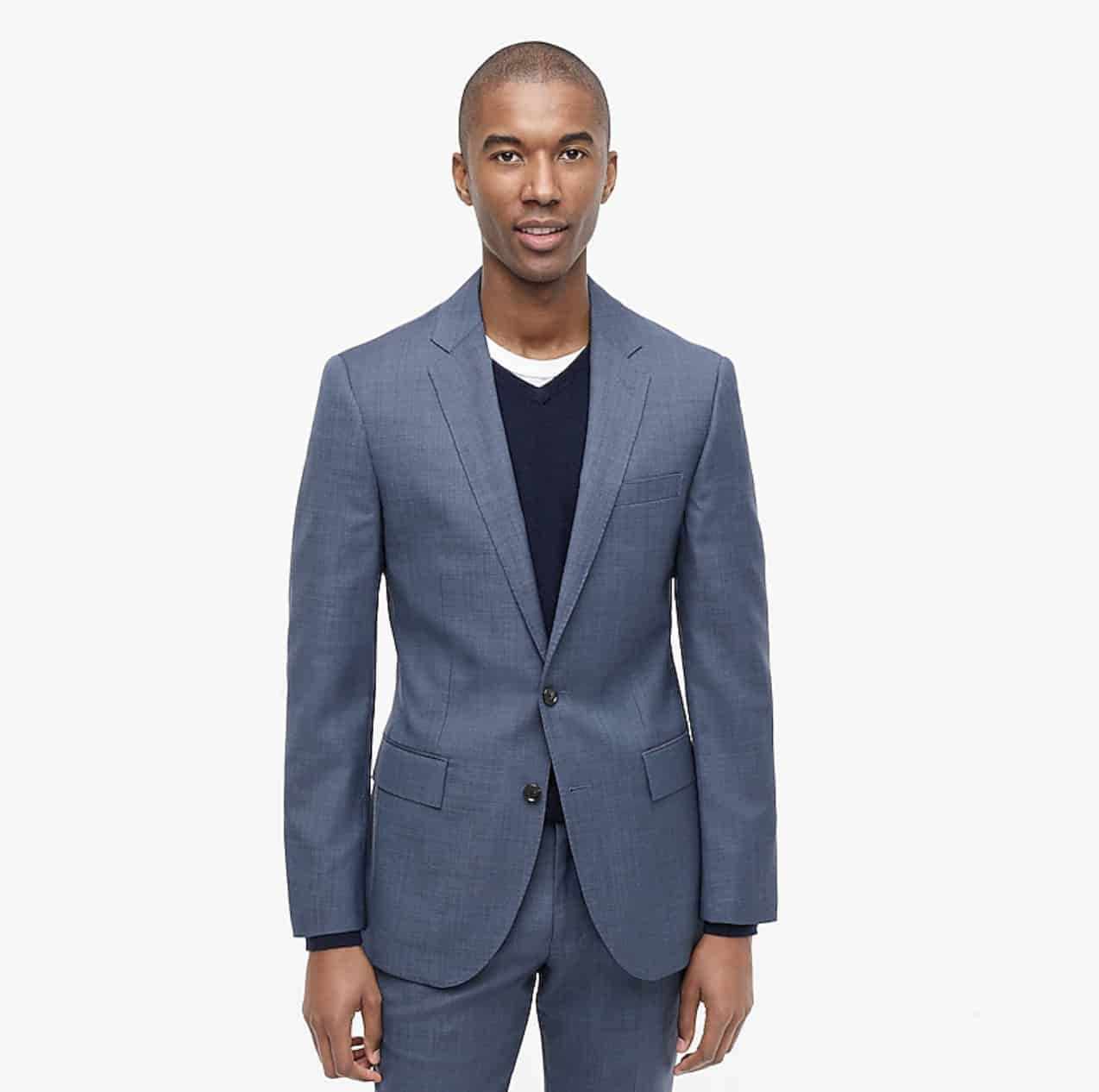
A jetted pocket gives a suit jacket a more formal feel, and it’s the most common type of suit you’ll see at black tie events. This type of pocket can be found on a variety of suits. cut into the jacket’s lining, and the pocket that hangs on the inside, versus the patch pocket, which is visible from the outside.
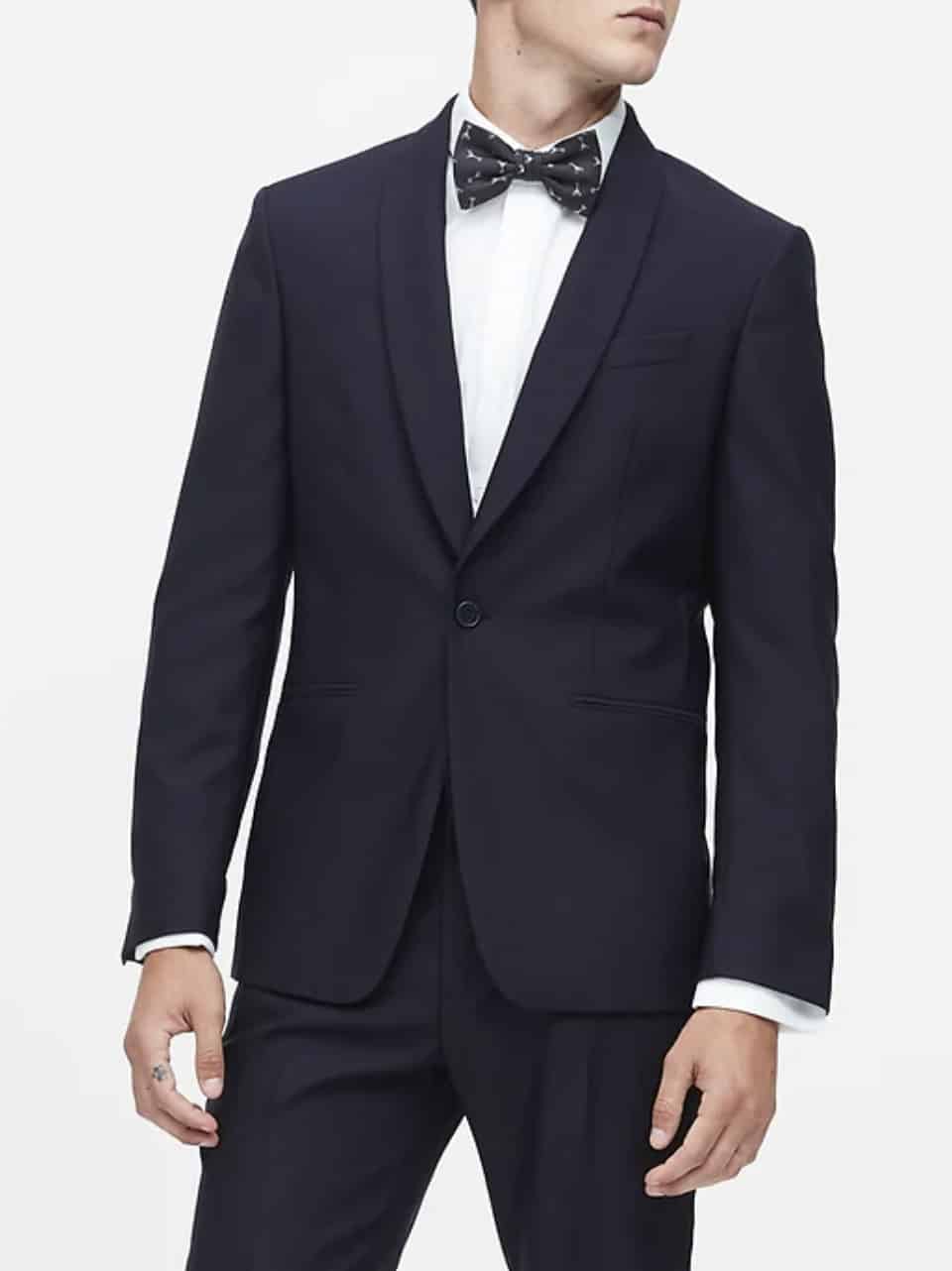
What are the different types of suits?
What are the different types of suits available?
There are three different types of suits: the slim-fit suit, the classic-fit suit, and modern-fit suit. You should also look at details like buttons, vents and different styles of pants when selecting a suit.
What is the most appropriate wedding suit?
The type of wedding, and the expected level of formality will determine what you wear. For a black tie event, a tuxedo with a shawl neck or black suit is appropriate. A navy blue or dark gray suit is best for less formal events. Darker colors are often associated with more formal events.
What is a good suit to wear at a funeral or memorial?
For a funeral you should wear a black suit, but depending on the time of year, dark or light gray suits will also work.
What is the 5-piece suit made of?
A 5-piece suit is reserved for those times when you need to look like an absolute millionaire. It has all of the necessary elements. The suit includes matching trousers, a waistcoat or vest and a bowtie.